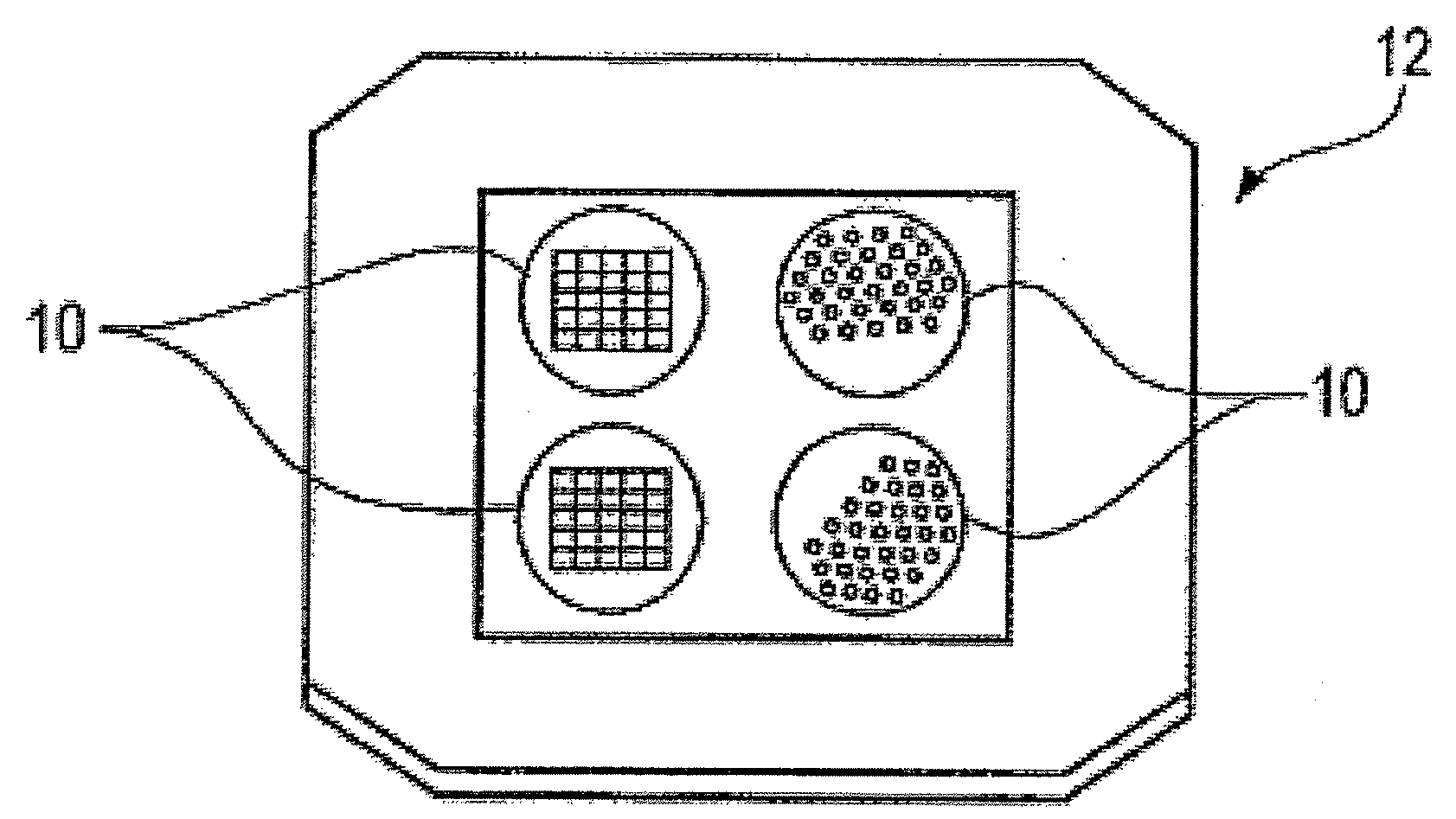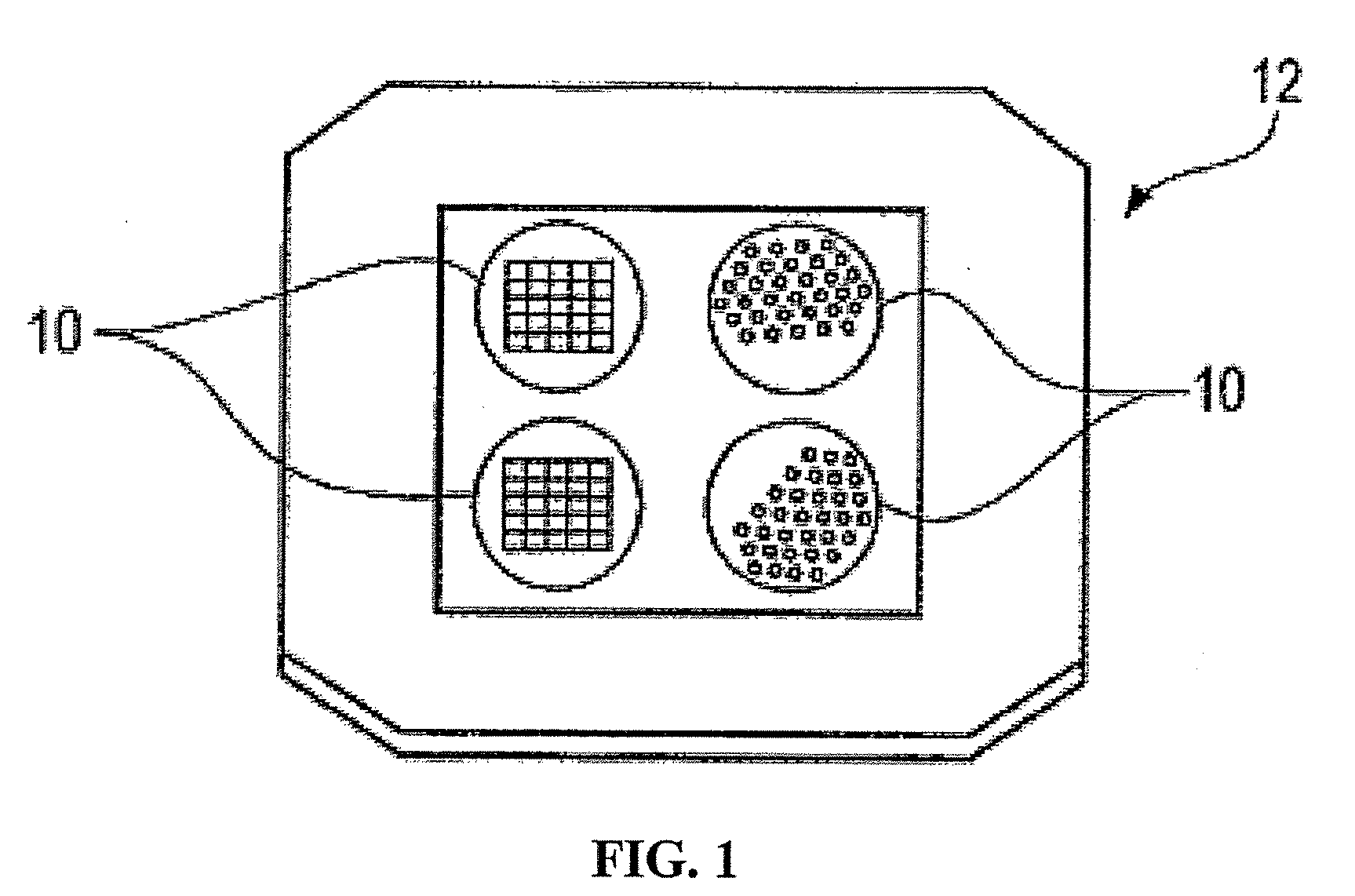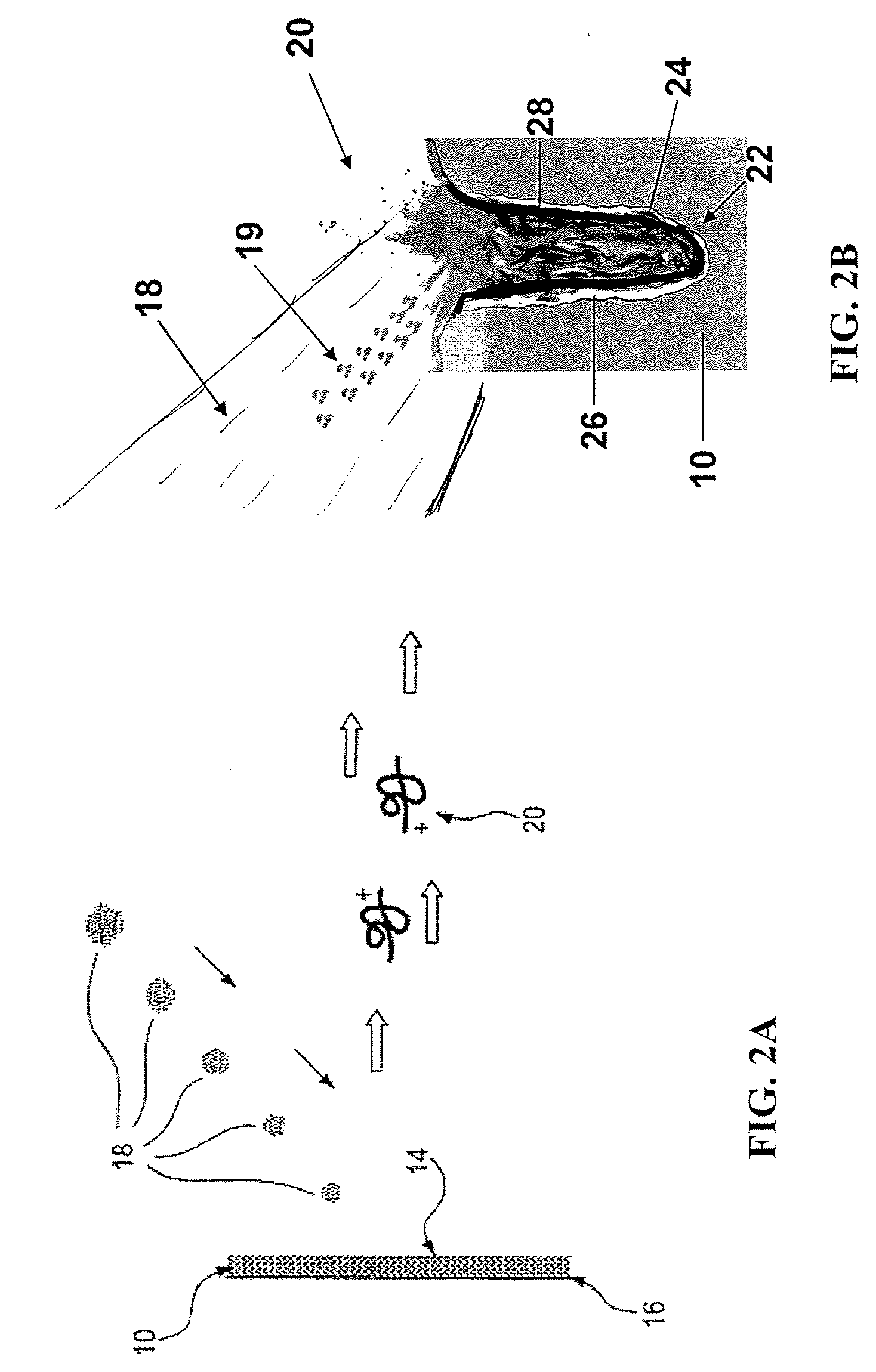Nanostructure-initiator mass spectrometry
a mass spectrometry and nanostructure technology, applied in the field of nanostructure-initiator mass spectrometry and mass spectrometry, can solve the problems of relatively low lateral resolution, less widely used procedures, and difficult study of molecules that are not easily rendered gaseous, and achieve high lateral resolution, high sensitivity, and high lateral resolution
- Summary
- Abstract
- Description
- Claims
- Application Information
AI Technical Summary
Benefits of technology
Problems solved by technology
Method used
Image
Examples
example 1
[0114]Highly boron-doped P-type, (100) orientation silicon wafers (0.008-0.02 Ohm-cm) were etched in 25% hydrofluoric acid in ethanol with top side photoillumination (N-type) and backside illumination (P-type) and 300 mA current for 20-45 minutes. The etched substrate was oxidized with ozone for approximately one minute.
example 2
[0115]Highly boron-doped P-type, (100) orientation silicon wafers (0.008-0.02 Ohm-cm) were etched in 25% hydrofluoric acid in ethanol with top side photoillumination (N-type) and backside illumination (P-type) and 300 mA current for 20-45 minutes. The etched substrate was oxidized with ozone for approximately one minute. The substrate was treated with an affinity coating by either Method (A): soaking in neat chlorosilane reactant, baking at 100° C. for approximately 20 minutes, and rinsing with methanol or isopropanol; or Method (B): preparing a 2.5% solution of chlorosilane reactant in dry toluene in dry glassware, adding the solution to the substrate, soaking for approximately 10 minutes, rinsing with acetone, soaking in acetone for 1 hour, rinsing with acetone, and drying with nitrogen. Optionally, these surfaces were baked at 100° C. under high vacuum to cure the surface and remove excess chlorosilane reactant. Tested chlorosilane reactants include (heptadecafluoro-1,1,2,2-tetra...
example 3
[0116]Highly boron-doped P-type, (100) orientation silicon wafers (0.008-0.02 Ohm-cm) were etched in 25% hydrofluoric acid in ethanol with top side photoillumination (N-type) and backside illumination (P-type) and 300 mA current for 20-45 minutes. The etched substrate was oxidized with ozone for approximately one minute. A mixture of Au / Pd was sputtered onto the substrate for three minutes depositing approximately 5 nm of metal.
PUM
| Property | Measurement | Unit |
|---|---|---|
| size | aaaaa | aaaaa |
| diameter | aaaaa | aaaaa |
| diameter | aaaaa | aaaaa |
Abstract
Description
Claims
Application Information
 Login to View More
Login to View More - R&D
- Intellectual Property
- Life Sciences
- Materials
- Tech Scout
- Unparalleled Data Quality
- Higher Quality Content
- 60% Fewer Hallucinations
Browse by: Latest US Patents, China's latest patents, Technical Efficacy Thesaurus, Application Domain, Technology Topic, Popular Technical Reports.
© 2025 PatSnap. All rights reserved.Legal|Privacy policy|Modern Slavery Act Transparency Statement|Sitemap|About US| Contact US: help@patsnap.com



